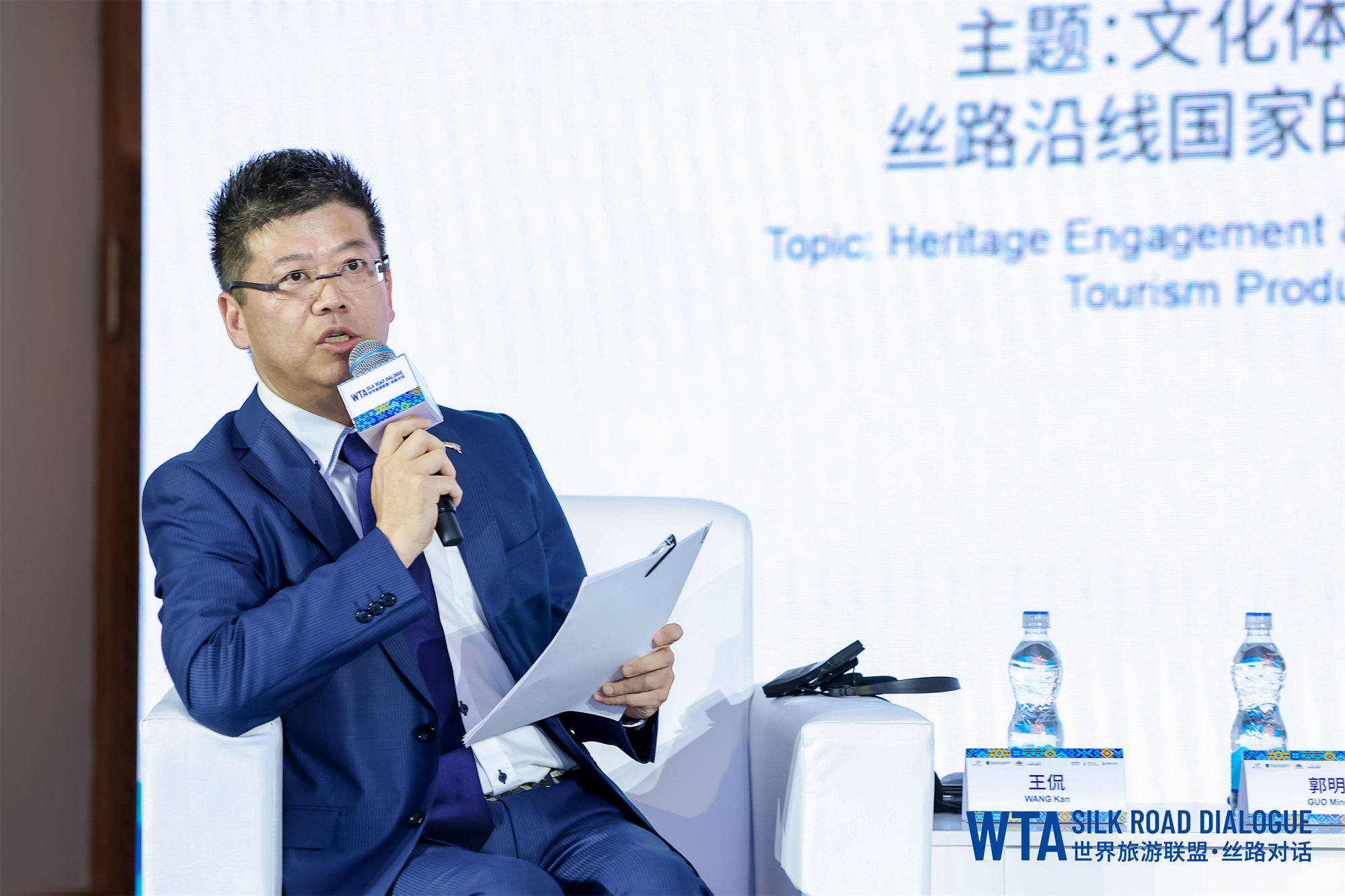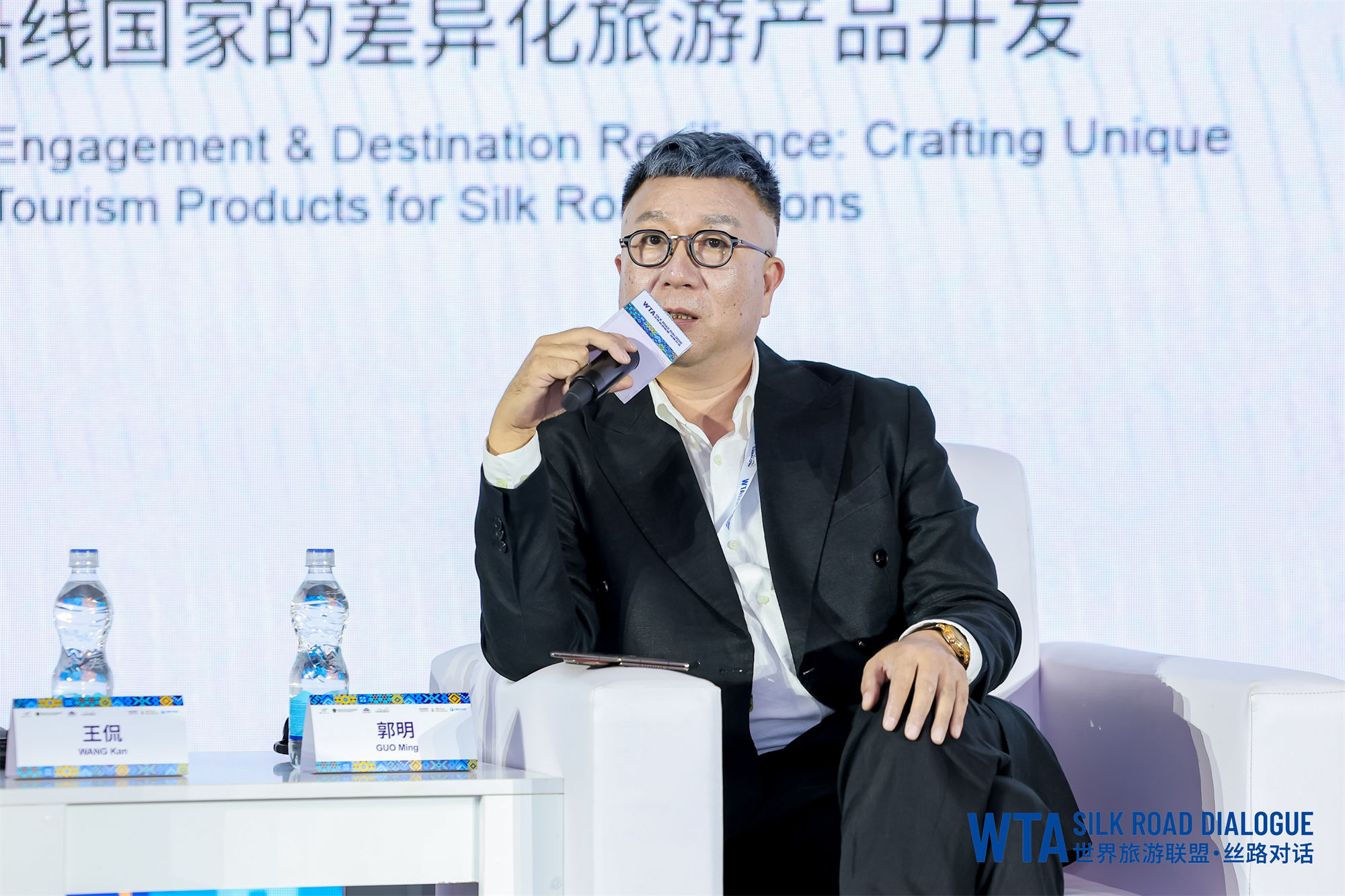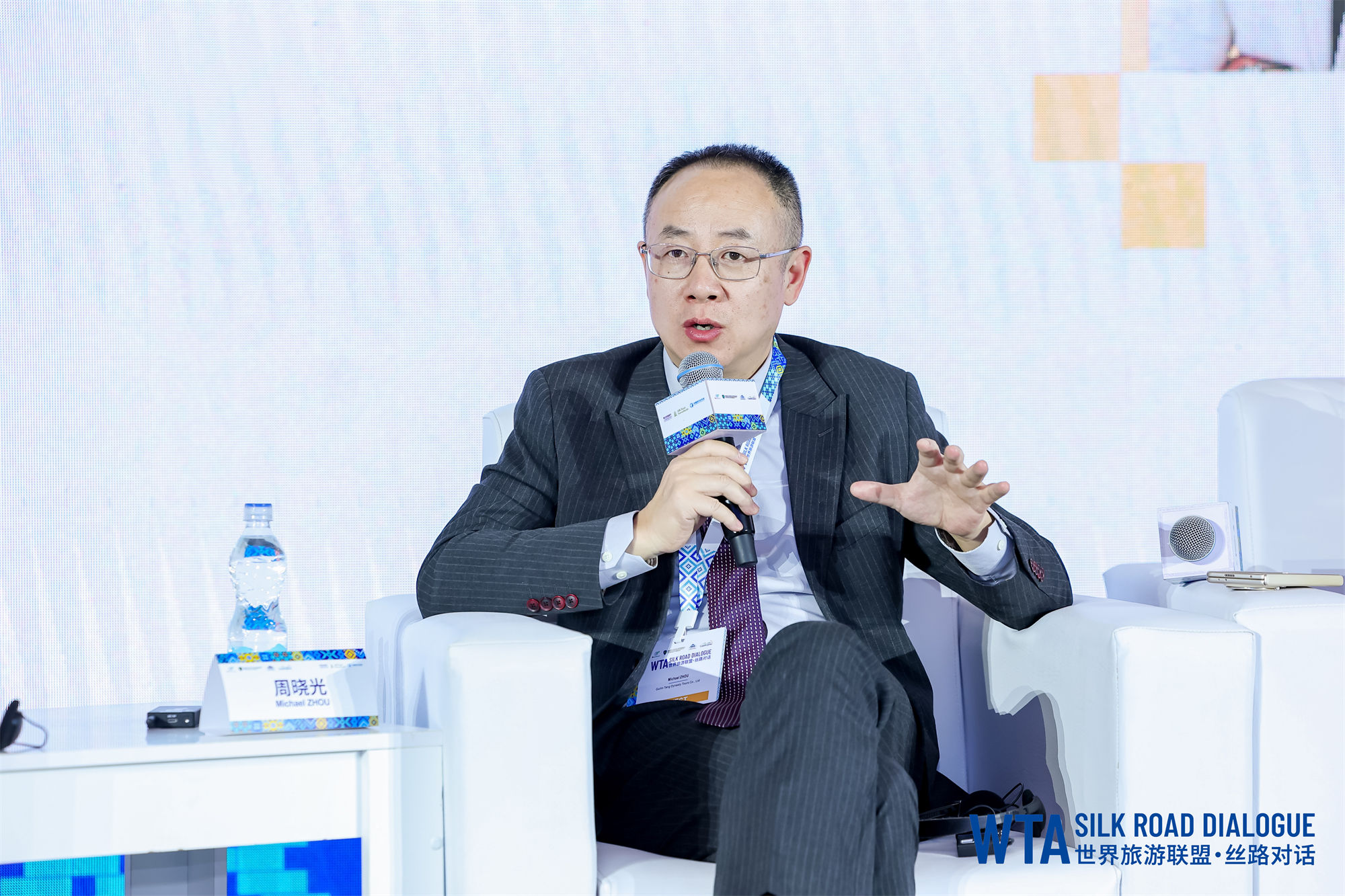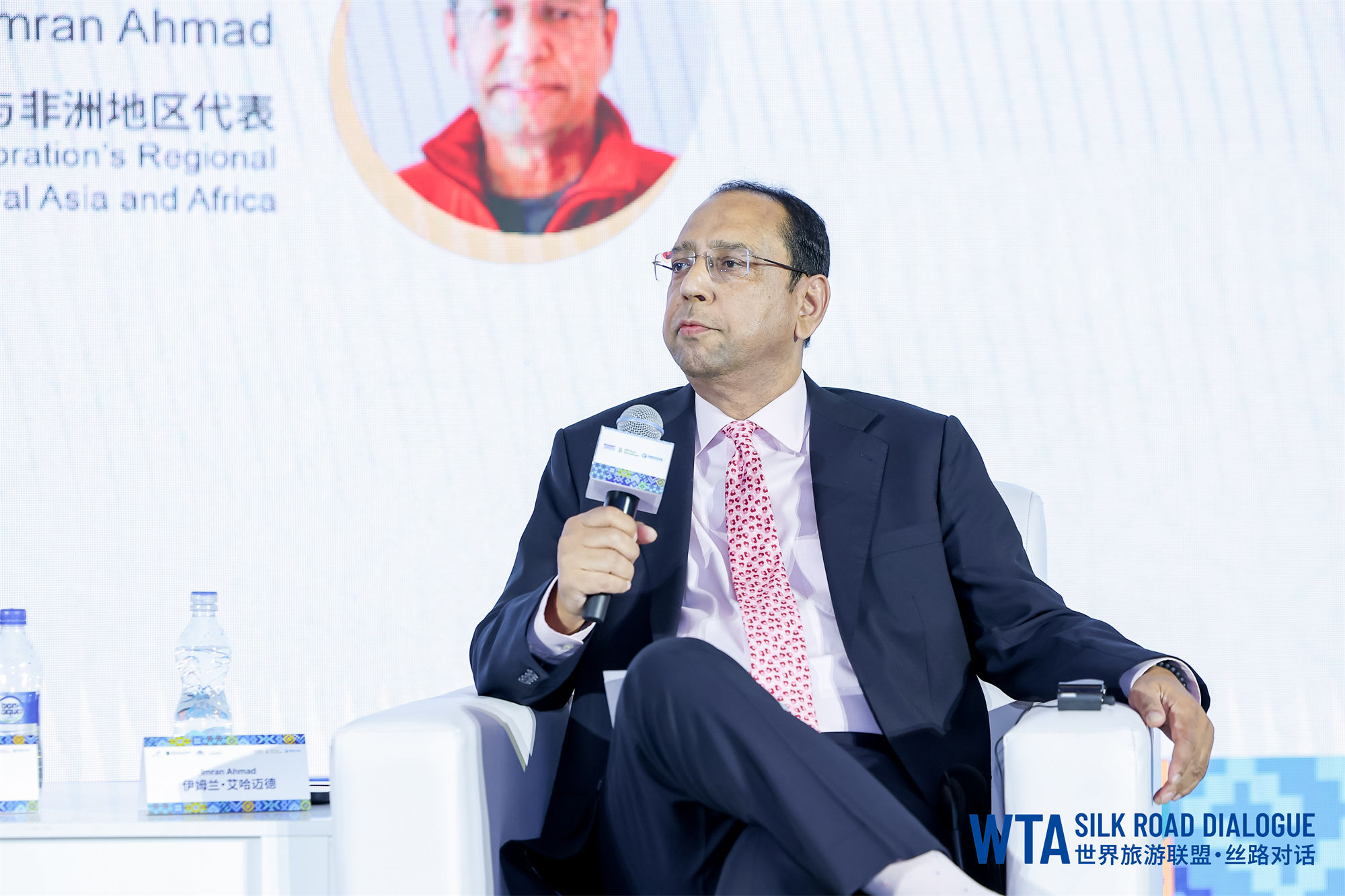2025-07-17
Recently, the WTA·Silk Road Dialogue was held in Samarkand, Uzbekistan. During the event, guests from China and abroad engaged in an in-depth discussion on the topic "Heritage Engagement & Destination Resilience: Crafting Unique Tourism Products for Silk Road Nations".

Moderator: Mr. Wang Kan, Researcher of the Tourism Research Center at Capital University of Economics and Business
Panelists:
Mr. Guo Ming, Co-Founder and Chairman of HH Travel
Mr. Michael Zhou, President and General Manager of Guilin Tang Dynasty Tours Co., Ltd.
Ms. Mika Cui, Co-Founder of Qyer, CEO of Roca Culture & Tourism (Beijing) Media Technology Co., Ltd.
Mr. Umid Khakimov, Head of the Samarkand Regional Department of the "Hunarmand" (Artisans) Association
Mr. Khonkul Samarov, Director of the Registan Ensemble in Samarkand
Mr. Imran Ahmad, CNN Corporation’s Regional Representative for Central Asia and Africa
Below are the key highlights from their conversation:

Moderator: With the China-Uzbekistan Visa Exemption Agreement now in effect, an increasing number of Chinese tourists will be able to travel freely to Uzbekistan. This raises several key questions: What makes Uzbekistan’s tourism offerings unique? How does it differ from other Central Asian countries? And how can tourism providers and organizers tailor their products to better meet travelers’ needs? Before delving into these topics, let’s first examine the current state of Chinese tourism to Uzbekistan. According to public statistics, in 2024, over 57,000 Chinese tourists visited Uzbekistan, making China the second-largest source of non-CIS visitors. Against this backdrop, how can Silk Road countries develop differentiated tourism products to enhance cultural experiences and destination appeal? Let us hear the insights of our panelists.

Mr. Khonkul Samarov: The Registan complex stands as one of Samarkand’s most iconic historical landmarks. In order to better cater to Chinese visitors, we have introduced Chinese signage and employed Mandarin-speaking guides to ensure a more seamless and enjoyable experience. Additionally, given the region’s hot climate, we’ve introduced a nighttime light show that allows tourists to explore the rich cultural heritage of Samarkand in the cooler evening hours. Looking ahead, we plan to intensify our promotional efforts on Chinese social media platforms and implement additional measures to attract even more Chinese travelers to Uzbekistan.

Mr. GUO Ming: Allow me to begin with a Chinese saying: "The land shapes its people". Every region, shaped by its unique climate, environment, and way of life, cultivates distinct customs and cultural identities. These, in turn, give rise to rich histories and traditions. In this sense, "the land" represents the profound diversity that exists across the world. So, the question becomes: How do we create differentiated tourism products that leverage the resources already available to us? I’ve distilled the answer into four essential elements: People, Events, Objects, and Places. "People" are at the heart of it all. This isn’t limited to tour guides—it extends to local university professors, cultural experts, and artisans who can provide Chinese tourists with deeper insights into Uzbekistan’s heritage and traditions. "Events", being the core elements of product design, are the defining moments of any destination. Uzbekistan, with its rich history and vibrant festivals, has so much to offer. By curating distinctive local celebrations and weaving them into the tourist experience, we can provide visitors with meaningful cultural immersion. "Objects" cover two important aspects. First, there’s local cuisine, which is often the most tangible expression of a region’s culture and a key highlight of any travel experience. Second, we must embrace intangible cultural heritage, such as traditional Uzbek crafts. Tourists should be encouraged to actively participate in workshops, fostering a deeper connection through hands-on experiences. Lastly, "Places" provide the perfect backdrop for cultural discovery. While famous landmarks, museums, and performance venues are important, we should also shine a light on lesser-known destinations—like local bazaars, markets, and even family homes. These hidden gems offer experiences that large tour groups often miss, providing a more authentic, intimate encounter with Uzbekistan’s culture.

Mr. Umid Khakimov: Samarkand, a key artistic hub along the Silk Road, is home to a variety of traditional crafts, such as woodcarving, embroidery, carpet weaving, goldsmithing, jewelry-making, and ceramics—each offering significant potential for tourism development. The Hunarmand Association of Folk Artisans currently hosts regular masterclasses where visitors can engage in hands-on workshops to create jewelry, pottery, woodcarvings, and other crafts. Under the guidance of local artisans, tourists can tour craft workshops, interact with the inheritors of intangible cultural heritage, and even design personalized souvenirs. Over the past four years, we’ve had the privilege of inviting artisans from China and other countries to participate in the International Festival of Gold Embroidery and Jewelry. In addition, we’ve organized two music festivals, which saw a strong interest from Chinese attendees in Uzbekistan’s folk music. Through these efforts, Samarkand’s traditional crafts have not only been preserved but also serve as bridges for cultural exchange, creating sustainable opportunities for both tourists and local communities. Today, the association boasts over 3,000 master artisans and trains more than 16,000 students. Notably, 400 craftsmen from Samarkand are now listed in Uzbekistan’s National Tourism Register.

Mr. Michael Zhou: Uzbekistan’s rich historical and cultural heritage has a powerful appeal for international tourists. From our observations, visitors from Europe, America, and Australia tend to spend around ten days exploring Uzbekistan, focusing primarily on iconic destinations like Samarkand, Khiva, and Tashkent. However, one of the main challenges is the limited awareness of the country’s full range of tourism resources. Our customer data indicates that many travelers are unfamiliar with Central Asia—particularly Uzbekistan’s offerings. We’ve also identified a few bottlenecks in inbound tourism: Visa facilitation needs further improvement. While Uzbekistan offers visa-free entry to many countries, tourists often wish to combine their trips with visits to neighboring nations such as Kyrgyzstan or Tajikistan, some of which still require separate visas. We recommend introducing regional visa policies to facilitate smoother travel across Central Asia. Overseas promotion needs to be stepped up. At major international exhibitions, Central Asia, particularly Uzbekistan, remains underrepresented. The region’s market appeal could be better showcased through more robust participation and more creative promotional strategies. International flight connectivity needs expansion. Increasing direct flight routes to Europe and North America will help attract more international visitors and strengthen Uzbekistan’s standing as a global destination.

Mr. Imran Ahmad: Welcome to the heart of the Silk Road – Uzbekistan. Having had the privilege of living here for nearly 15 years, I’m delighted to share with you the unique cultural and tourism resources this remarkable country offers. For those familiar with Uzbekistan, cities like Samarkand and Bukhara are undoubtedly on the must-visit list. Yet, it’s unfortunate that many Chinese travelers have yet to experience this beautiful land. I’m confident that those who make the journey will find it deeply rewarding. Beyond the historical sites, cuisine, and culture, there’s a rich tapestry of scholars and legendary figures who have made groundbreaking contributions to modern science – their stories should be central to our destination promotion efforts. Consider Al-Khwarizmi, the father of algebra and algorithms, whose theories laid the groundwork for artificial intelligence and digital technology. Ibn Sina, whose medical research forms the cornerstone of modern medicine. Al-Battani and Al-Biruni, pioneers in earth sciences and astronomy, created world maps and studied celestial bodies – their work laid the foundation for modern GPS technology. By integrating these extraordinary scientific legacies with Uzbekistan’s rich historical and cultural heritage, we can present a truly unique and compelling narrative that will resonate with international visitors. In recent years, CNN has partnered with Uzbekistan on various investment initiatives and tourism promotion projects. However, I firmly believe that the potential is still vast. Media platforms have the power to effectively package Uzbekistan’s cultural and tourism assets by blending modern scientific and technological elements with the country’s historical displays, offering visitors an enriched and innovative cultural experience.

Ms. Mika Cui: From a marketing perspective, tourism promotion boils down to two key approaches: brand marketing and product marketing. As a leading independent travel community, Qyer has built an extensive library of travel guides about Uzbekistan. One statistic that stood out to me was particularly surprising: a single three-star featured post about Uzbekistan has garnered over 190,000 views. This clearly demonstrates a strong user interest in the destination. The success of these posts can be attributed to their high-quality content, which typically includes detailed DIY travel itineraries, covering everything from visa applications to flight and hotel bookings, and local transportation options. When it comes to brand marketing, we’ve successfully promoted a number of emerging destinations in recent years. With the surge in independent travel, modern travelers increasingly rely on personal research and a variety of guides to plan their own trips. As they share their experiences across social media, video platforms, and travel websites, their itineraries gradually evolve into established tourism products. This creates a distinct marketing dynamic for emerging destinations like Uzbekistan, compared to more established ones. Travelers typically start with well-known, popular destinations before branching out to niche locations. For emerging destinations, it’s essential to identify specific market segments and tailor promotions to the interests of those groups. By offering unique products that capture attention, Uzbekistan can carve out its own space in the tourism market. I believe Uzbekistan has immense potential to develop differentiated tourism products for the Chinese market. For instance, stories of historical figures such as mathematicians and medical scholars could perfectly align with current Chinese travel trends like wellness tourism and study tours. By focusing on particular demographics and interest groups, Uzbekistan can create a unique niche, similar to the strategies we’ve used to promote other emerging destinations. This is the valuable experience we’ve gained from promoting emerging destinations.
Moderator: Reflecting on history, we remember that the esteemed Xuanzang spent over a year traveling from Chang’an to Samarkand. His journey resulted in just one tourist arrival in Uzbekistan. Today, however, our travel efficiency has dramatically improved. With more convenient transportation options and the collective efforts of tourism professionals like all of you here today, I’m confident that we can create even more distinctive tourism products. Together, we can build a brighter future for Silk Road tourism!